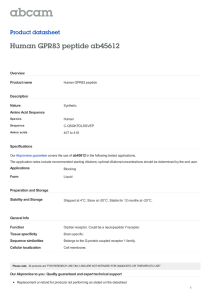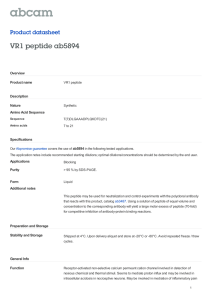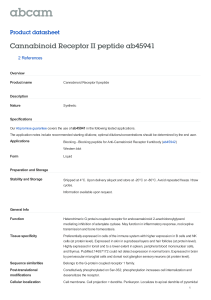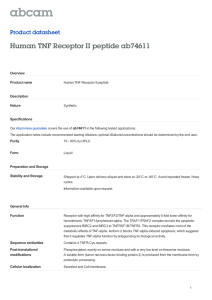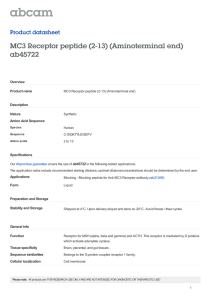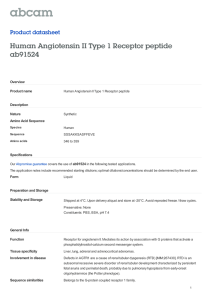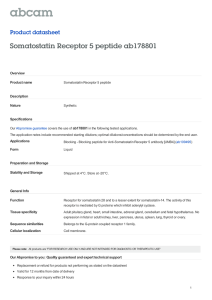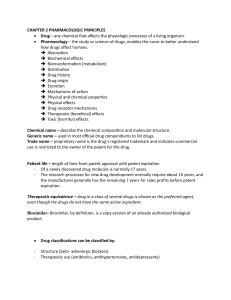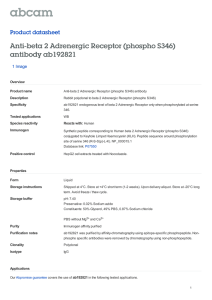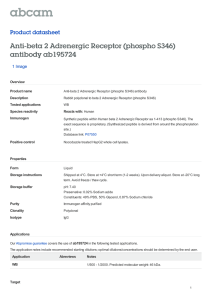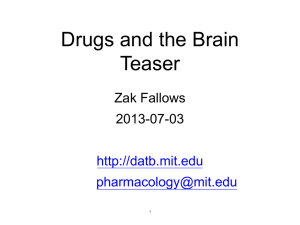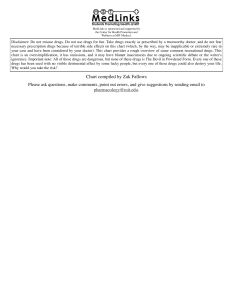beta 2 Adrenergic Receptor peptide (390-402) (Carboxyterminal end) ab45818
advertisement
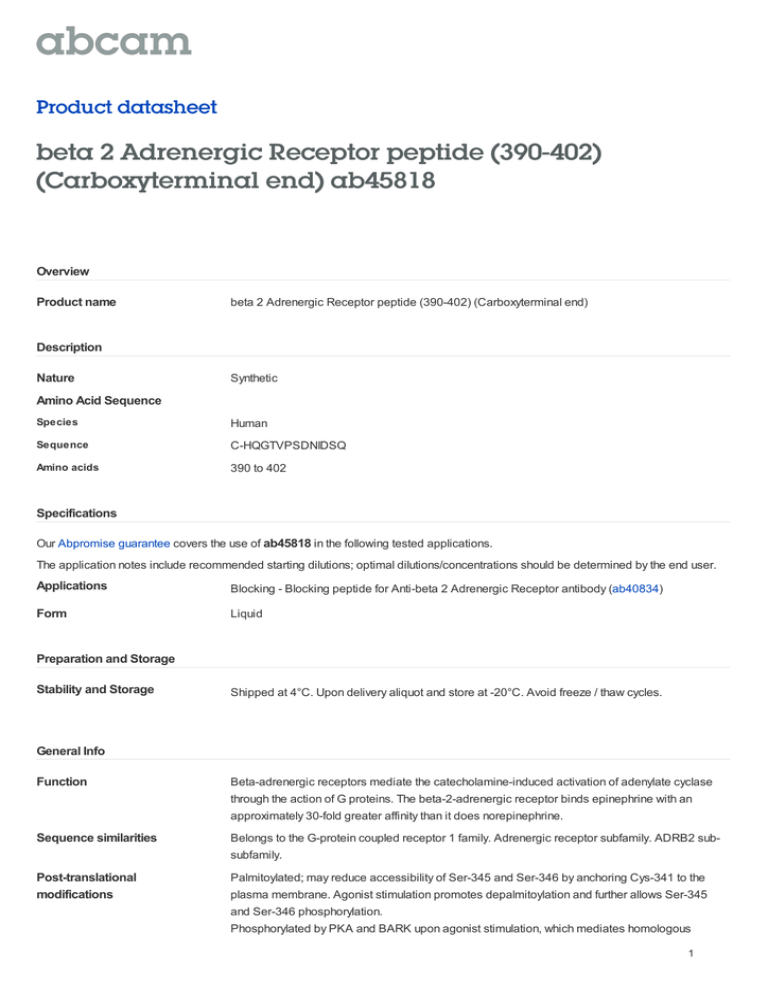
Product datasheet beta 2 Adrenergic Receptor peptide (390-402) (Carboxyterminal end) ab45818 Overview Product name beta 2 Adrenergic Receptor peptide (390-402) (Carboxyterminal end) Description Nature Synthetic Amino Acid Sequence Species Human Sequence C-HQGTVPSDNIDSQ Amino acids 390 to 402 Specifications Our Abpromise guarantee covers the use of ab45818 in the following tested applications. The application notes include recommended starting dilutions; optimal dilutions/concentrations should be determined by the end user. Applications Blocking - Blocking peptide for Anti-beta 2 Adrenergic Receptor antibody (ab40834) Form Liquid Preparation and Storage Stability and Storage Shipped at 4°C. Upon delivery aliquot and store at -20°C. Avoid freeze / thaw cycles. General Info Function Beta-adrenergic receptors mediate the catecholamine-induced activation of adenylate cyclase through the action of G proteins. The beta-2-adrenergic receptor binds epinephrine with an approximately 30-fold greater affinity than it does norepinephrine. Sequence similarities Belongs to the G-protein coupled receptor 1 family. Adrenergic receptor subfamily. ADRB2 subsubfamily. Post-translational modifications Palmitoylated; may reduce accessibility of Ser-345 and Ser-346 by anchoring Cys-341 to the plasma membrane. Agonist stimulation promotes depalmitoylation and further allows Ser-345 and Ser-346 phosphorylation. Phosphorylated by PKA and BARK upon agonist stimulation, which mediates homologous 1 desensitization of the receptor. PKA-mediated phosphorylation seems to facilitate phosphorylation by BARK. Phosphorylated upon DNA damage, probably by ATM or ATR. Phosphorylation of Tyr-141 is induced by insulin and leads to supersensitization of the receptor. Ubiquitinated. Agonist-induced ubiquitination leads to sort internalized receptors to the lysosomes for degradation. Deubiquitination by USP20 and USP33, leads to ADRB2 recycling and resensitization after prolonged agonist stimulation. USP20 and USP33 are constitutively associated and are dissociated immediately after agonist stimulation. Cellular localization Cell membrane. Please note: All products are "FOR RESEARCH USE ONLY AND ARE NOT INTENDED FOR DIAGNOSTIC OR THERAPEUTIC USE" Our Abpromise to you: Quality guaranteed and expert technical support Replacement or refund for products not performing as stated on the datasheet Valid for 12 months from date of delivery Response to your inquiry within 24 hours We provide support in Chinese, English, French, German, Japanese and Spanish Extensive multi-media technical resources to help you We investigate all quality concerns to ensure our products perform to the highest standards If the product does not perform as described on this datasheet, we will offer a refund or replacement. For full details of the Abpromise, please visit http://www.abcam.com/abpromise or contact our technical team. Terms and conditions Guarantee only valid for products bought direct from Abcam or one of our authorized distributors 2
